Maize is the most widely grown grain in the Americas and is a staple food in many parts of the world. It is a highly nutritious grain used to make various food items. Maize crop helps conserve water by having a deep root system that helps moisten the soil. Maize cultivation provides rural farmers with employment opportunities and generates income for them.
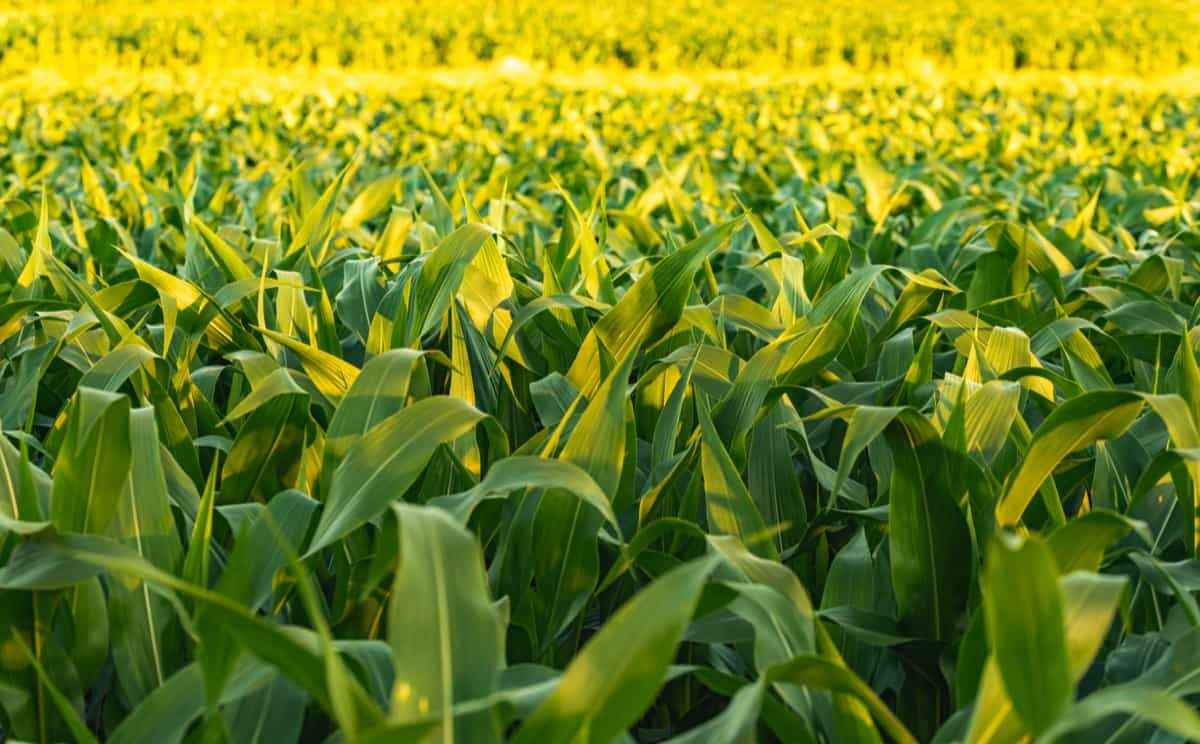
How to Start Corn/Maize Farming in Mexico
The Different Types of Corn Grown in Mexico
- Sweet Corn
- Dent Corn
- Flint Corn
- Cacahuazintle
- Jalisco Yellow Corn
- Guanajuato Orange Corn
The Best Regions for Corn Farming in Mexico
- Mexican farmers use various modern techniques to produce high yields, including irrigation systems, hybrid seeds, and chemical fertilizers.
- Many regions in Mexico are ideal for growing Corn. The country’s diverse climate and topography offer a wide range of conditions that can support successful Maize production.
- Most of Mexico’s Corn is grown in the central states of Sinaloa, Guerrero, Michoacán, Zacatecas, Nayarit, Jalisco, Aguascalientes, and Guanajuato. These states have large tracts of land with the types of soils and climates ideal for growing Corn.
- Each region has unique advantages that make it well-suited for Corn farming. In Sinaloa, for example, the long growing season and warm climate are ideal for producing high yields of Corn. The state of Sonora also has a long growing season, but its cooler temperatures allow farmers to produce a higher-quality crop.
In case you missed it: Hybrid Chilli Yield Red and Green Per Acre in India
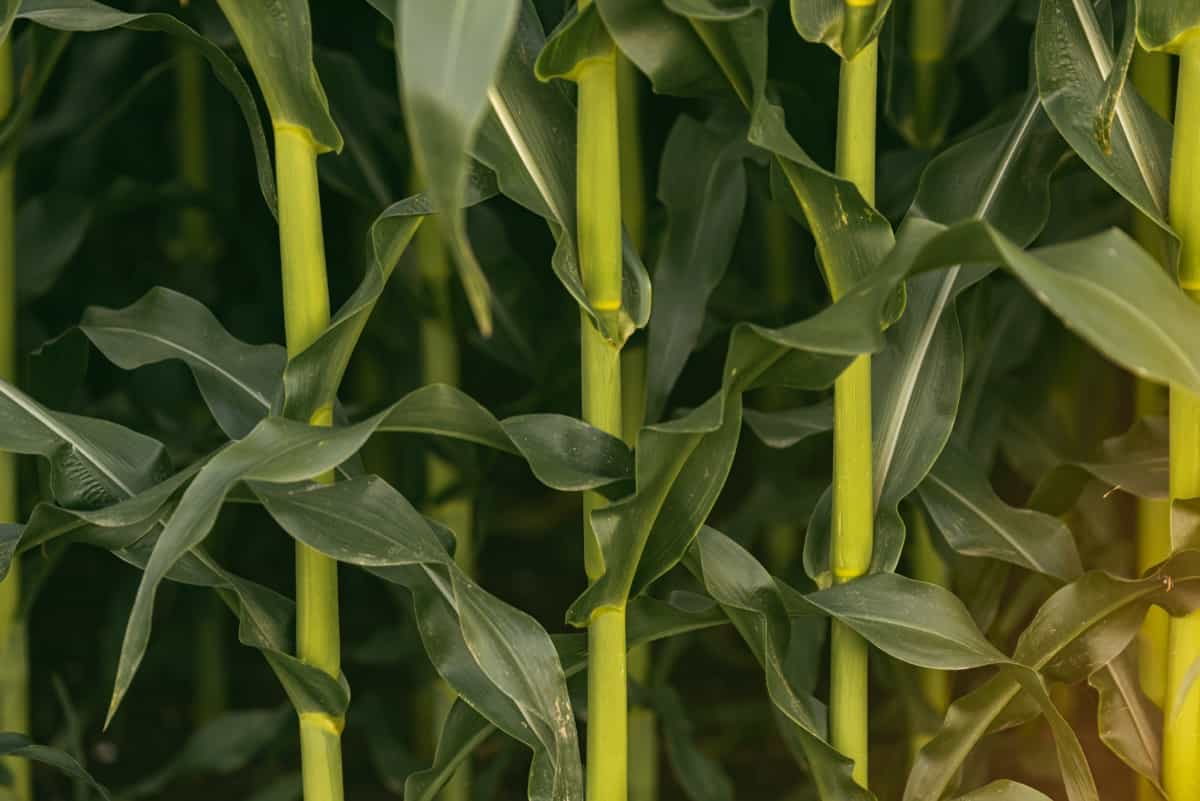
Climate and Soil Preparation for Corn Farming in Mexico
- In Mexico, the climate and soil are ideal for growing Corn/Maize. The country has a tropical climate with warm temperatures and high rainfall. The soil is fertile and has a high organic matter content. This makes it perfect for Corn/Maize production.
- The country has a long growing season, with warm temperatures and plenty of sunshine. There is also enough rainfall to give the crops the moisture they need to thrive.
- Choosing the right variety of Corn/Maize for your farm is important to produce a good yield. There are many different varieties available, each with its unique characteristics. You should select a variety suited to your farm’s climate and soil conditions.
- Once you have selected the right variety, you must prepare the land for planting. This includes clearing any debris, tilling the soil, and applying fertilizer.
Land Preparation for Corn Farming in Mexico
Regarding Corn farming, land preparation is key to ensuring a successful harvest. Mexico is no different, and the first step in preparing your land for planting is to clear any debris or unwanted vegetation. This can be done by hand or with the help of machinery, depending on the size of your farm. Once cleared, the land must be plowed or tilled to loosen the soil and allow for better seed germination. This process can be done manually or with the help of equipment such as tractors.
Maize is typically grown in tropical and subtropical regions and requires a warm climate with ample rainfall. The land required for Maize farming varies depending on the type of Maize being grown and the specific conditions of the farm. For example, irrigated farms require less land than rainfed farms. After the land is plowed, it should be harrowed to create a smooth, level surface for planting. This will ensure that your seeds are evenly distributed and have the best chance of germinating.
In case you missed it: How to Start Rabbit Farming in the USA: Key Rules, Business Plan, Cost, Profit, and Management
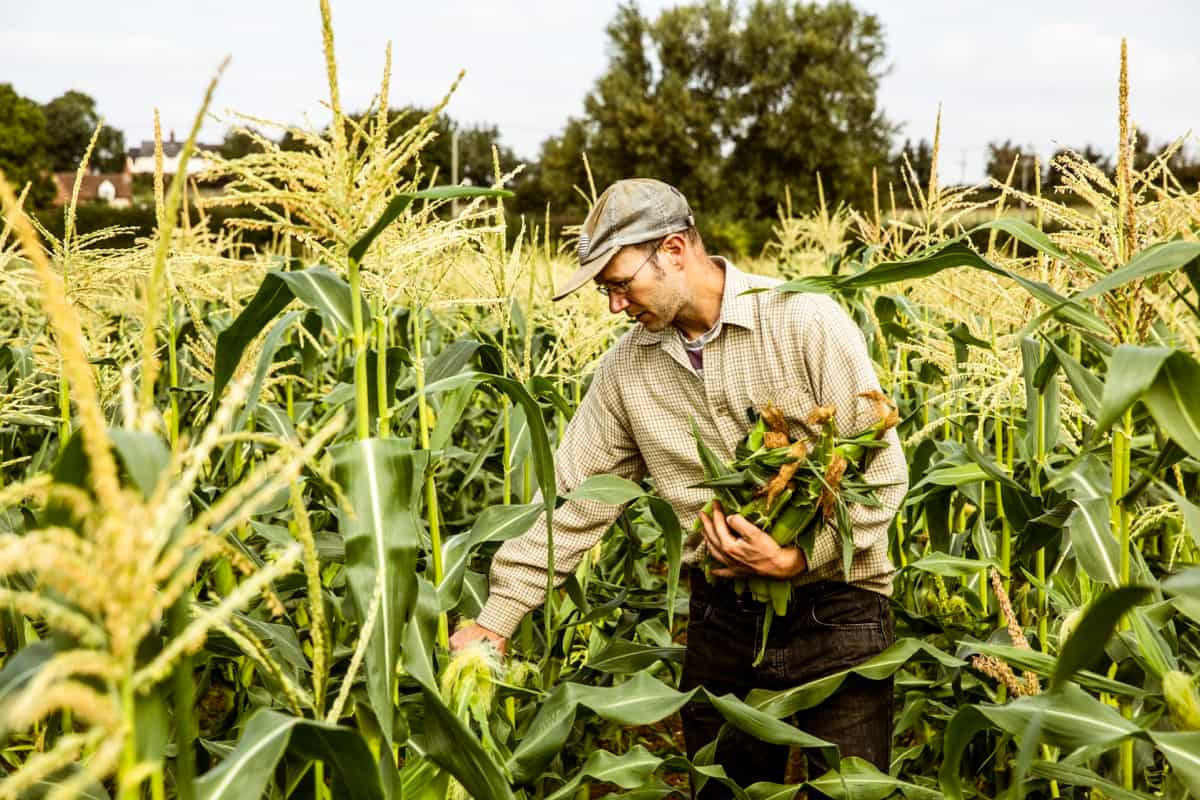
Method of Seed Sowing for Corn Farming
The first step in starting a Corn/Maize farm in Mexico is to sow the seeds. This can be done either by hand or with a machine. If you are sowing by hand, you must create furrows in the soil with a hoe. Once the furrows are created, you will need to sow the seeds evenly in the furrows and then cover them with soil. If you are using a machine, you will need to follow the instructions that come with the machine. Once the seeds are sown, you will need to water them regularly.
Application of Manures and Fertilizers for Corn Farming
It is essential to understand the role of soil in Maize cultivation and the application of manures and fertilizers before starting a farm. The soil is the primary source of nutrients for plants, so it is important to maintain its fertility. Fertile soils contain high levels of organic matter, which helps retain moisture and provides essential plant nutrients.
Manures and fertilizers can be used to improve the fertility of soils. Manures are organic materials added to soils to improve their physical properties, such as texture and structure, and provide plant nutrients. Fertilizers are inorganic materials added to soils to supply essential nutrients, such as nitrogen, phosphorus, and potassium.
The type of manure or fertilizer that is applied depends on the type of crop that is being grown and the fertility of the soil. For example, nitrogenous fertilizers are typically applied to Maize crops because they promote vegetative growth. Phosphorus-based fertilizers are often applied to soils that are low in phosphorus because they help improve crop yields. Potassium-based fertilizers may also be applied to improve crop yields and quality.
It is important to test your soil before you start fertilizing to determine which nutrients are lacking and how much fertilizer you will need to add. Once you have determined your soil needs, you can apply the fertilizer. If you are using a chemical fertilizer, follow the instructions on the package carefully. Over-fertilizing can damage your plants and reduce your yields.
Organic fertilization methods can be more labor-intensive than chemical fertilizers, but they are often more effective and have fewer negative side effects. If you choose to use organic methods, apply them evenly so that all your plants get the same amount of nutrients. Regularly monitoring your plants will help you determine when they need more fertilizer and how much to apply.
In case you missed it: How Does Extreme Weather Affect Food Production: Reasons for Reduced Crop Yields
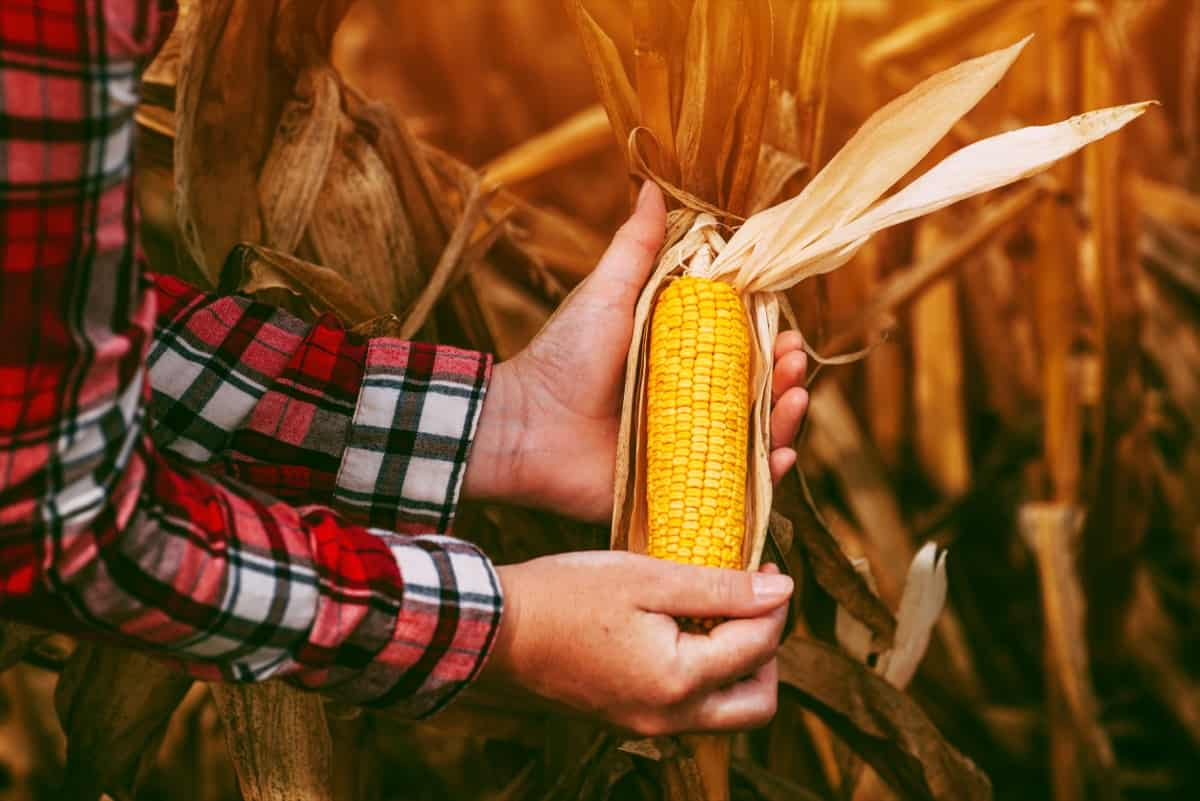
When to Plant Corn in Mexico
- Corn is a warm-season crop typically planted after the last average frost date in spring. In Mexico, the last average frost date is usually around mid-April. However, Corn can be planted in some parts of the country as early as late March.
- Corn requires at least eight hours of direct sunlight daily and prefers to grow in moist but well-drained soil. The ideal soil temperature for Corn germination is 21°C.
- To ensure a successful crop, farmers should test their soil before planting and amend it accordingly. A soil test will provide information on the soil’s pH, nutrients, and organic matter. Based on this information, farmers can adjust the soil to create an optimal growing environment for their Corn plants.
How to Grow Corn for Profit in Mexico?
1. Decide what Corn you want to grow – There are many different types of Corn, each with its unique properties. Some types of Corn are better suited for certain uses than others, so choosing the right type of Corn for your needs is important.
2. Choose the right location – Corn grows best in warm climates with sunshine and water. Choose a location that meets these criteria to give your plants the best chance of success. Corn farms require a lot of space, so you must have enough land for your operation. Look for an area with rich soil and plenty of sunlight.
3. Prepare the soil – Corn requires nutrient-rich soil to thrive. Add organic matter to the planting region to help improve the soil quality.
4. Plant the seeds at the right time – Timing is everything when planting Corn seeds. If you plant them too early, they may not germinate; if you plant them too late, they may not produce as much food as you need.
5. Water regularly – Corn plants need lots of water to grow properly. Make sure to water them deeply and regularly.
6. Purchase the necessary equipment and supplies – You’ll need tractors, plows, seeders, irrigation systems, etc. If possible, buy used equipment to save money.
7. Hire workers – Farm labor is typically cheap in Mexico, so you shouldn’t have trouble finding willing workers.
8. Plant your Corn– Plant the crop according to the recommended planting schedule for your area. Water regularly and fertilize as needed to ensure a healthy crop.
In case you missed it: Pest and Disease Management in Maize: Causes, Symptoms, Chemical and Biological Control

Weed Control Methods for Corn Farming in Mexico
Weed control is an important part of any Corn/Maize farming operation. Several different methods can be used to control weeds in a Corn field. The most common method is to use herbicides. Other methods include mechanical control, such as tilling or plowing, and cultural control, such as crop rotation. Herbicides are the most common method of weed control in a Corn field. Several different herbicides can be used, depending on the type of weeds present in the field.
Glyphosate is a common herbicide used to control weeds in a Corn field. It is applied before the Corn plants emerge from the ground. Glyphosate kills all types of plants, so care must be taken to avoid killing the Corn plants. Mechanical weed control involves using equipment to remove weeds from the field. This can be done by tilling or plowing the field before planting Corn. Tilling breaks up the soil and exposes weed seeds to light, which causes them to germinate and grow.
Plowing also breaks up the soil and exposes weed seeds, burying them deep in the ground where they cannot germinate and grow. Cultural weed control involves using management practices to prevent weeds from growing in the first place. One common cultural weed control practice is crop rotation. This involves planting a different crop in the field each year.
Irrigation Management for Corn Farming in Mexico
Corn is a thirsty crop that needs a consistent water supply throughout the growing season. Irrigation should be timed, so the Corn plants have time to dry out before nightfall to prevent disease. Remember that less water is better than too much water for Corn production. Ensure your irrigation system is set up properly and efficiently before planting your seeds.
Pest and Disease Control for Corn Farming in Mexico
The most common pest is Corn earworm, which can damage the ears of the Corn. The best way to control this pest is to use an insecticide when the larvae first appear. Another common problem is fungal diseases, such as anthracnose and leaf spot. These diseases can be controlled with fungicides. Farmers should also be on the lookout for pests that can damage the roots of Maize plants, such as nematodes and grubs. These pests can be controlled with pesticides or by rotating crops. Some important plant protection measures are;
- Clearing the land of debris or objects that could harm the crops.
- Tilling the soil to a depth of at least 30 cm allows the roots to penetrate deeply.
- Fertilizing the soil with organic matter such as compost or manure.
- Creating raised beds for planting if the soil is sandy or heavy clay.
- Installing an irrigation system before planting.
- Using row covers or netting to protect against insects and birds.
- Applying herbicides and pesticides according to label instructions.
In case you missed it: Corn Farming in USA: How to Start, Production by State, and Cultivation Guide
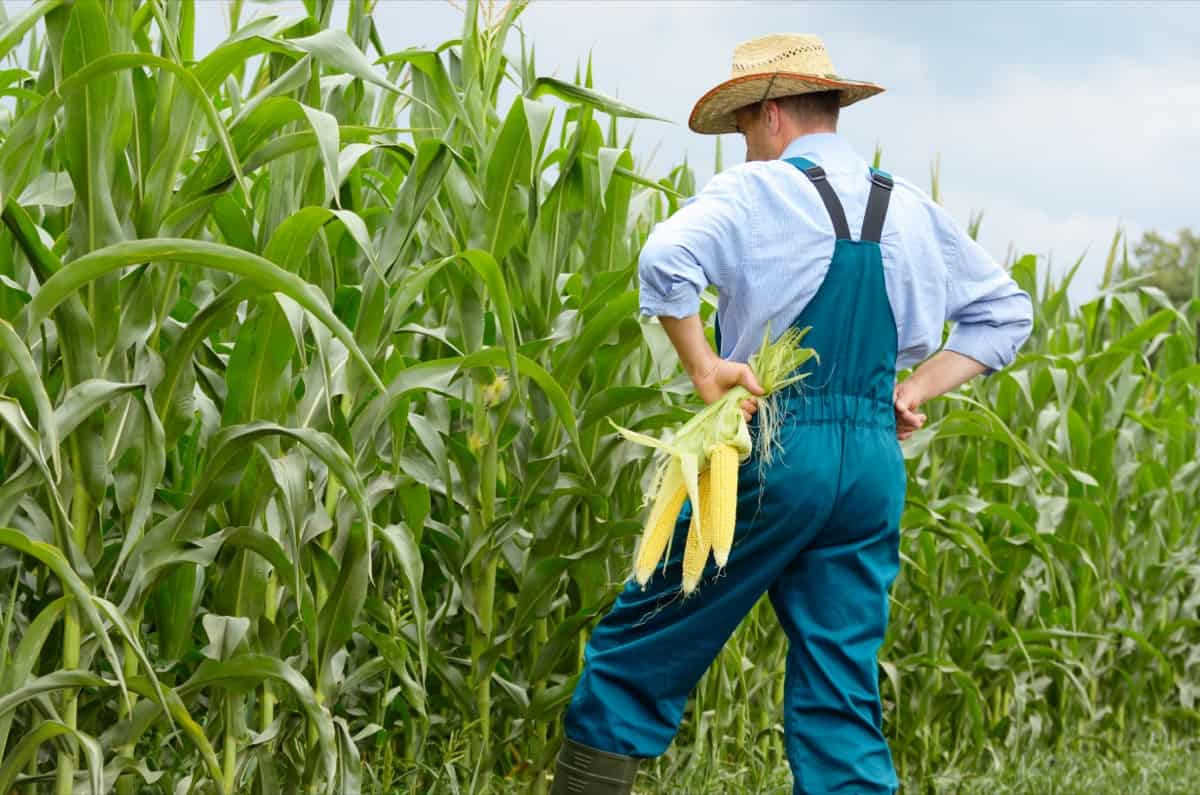
When and How to Harvest Corn in Mexico?
Firstly, waiting until the plants are fully mature before harvesting is important. This usually takes about 3-4 months after planting. Second, harvest during dry weather conditions, if possible, to avoid mold and mildew. Various techniques can be used to harvest the crop, but manual labor is the most common. This involves using workers to harvest the crop manually.
Once the Maize is harvested, it must be properly stored to keep it fresh. The best way to do this is by keeping the ears of Corn in a cool, dry place. If you plan on storing the Corn for an extended period, you can also place it in a freezer.
Corn Yield per Hectare in Mexico
The average Maize yield in Mexico is around 3 to 3.83 metric tons per hectare. However, this yield can vary greatly depending on location and climate conditions. Choosing a location with the ideal climate conditions for Maize production is important to maximize Maize yields. Additionally, farmers should use high-quality seeds that are well-suited to the local climate conditions. With proper care and management, farmers can achieve high Maize yields that will provide a good return on investment.
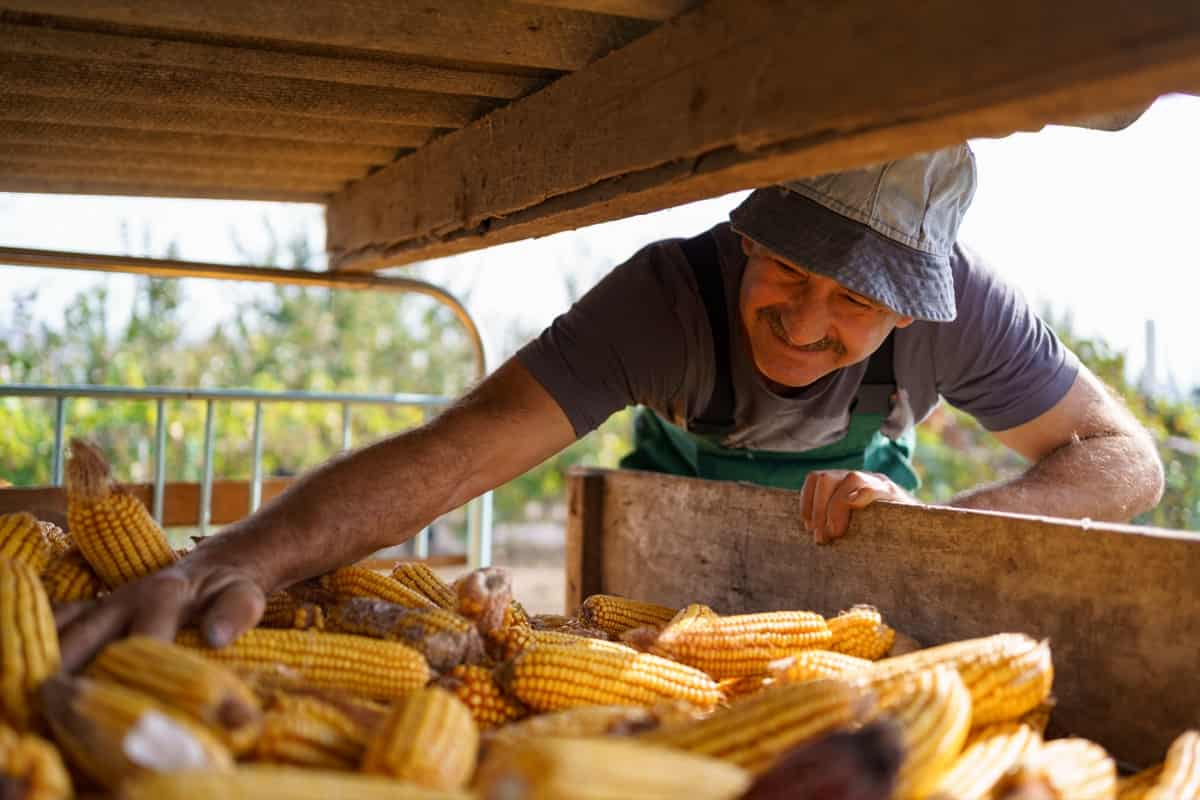
Conclusion
Mexico is one of the world’s leading producers and exporters of Corn, also known as Maize. Mexican farmers have been growing and harvesting Corn for centuries, and the country’s climate and soil are ideal for this type of agriculture. Maize cultivation helps to improve soil fertility and provide organic matter for the soil.
- Types of Pesticides Used in Agriculture: A Beginner’s Guide
- Economical Aquaculture: A Guide to Low-Budget Fish Farming
- 15 Common Planting Errors That Can Doom Your Fruit Trees
- How to Make Houseplants Bushy: Effective Tips and Ideas
- Innovative Strategies for Boosting Coconut Pollination and Yield
- Pollination Strategies for Maximum Pumpkin Yield
- The Complete Guide to Chicken Fattening: Strategies for Maximum Growth
- Natural Solutions for Tulip Problems: 100% Effective Remedies for Leaf and Bulb-Related Issues
- Revolutionizing Citrus Preservation: Towards a Healthier, Greener Future
- Natural Solutions for Peony Leaf and Flower Problems: 100% Effective Remedies
- Maximizing Profits with Avocado Contract Farming in India: A Comprehensive Guide
- Natural Solutions for Hydrangea Problems: 100% Effective Remedies for Leaf and Flowers
- The Ultimate Guide to Choosing the Perfect Foliage Friend: Bringing Life Indoors
- From Sunlight to Sustainability: 15 Ways to Use Solar Technology in Agriculture
- The Ultimate Guide to Dong Tao Chicken: Exploring from History to Raising
- The Eco-Friendly Makeover: How to Convert Your Unused Swimming Pool into a Fish Pond
- Mastering the Art of Delaware Chicken Farming: Essentials for Healthy Backyard Flocks
- 20 Best Homemade Fertilizers for Money Plant: DIY Recipes and Application Methods
- How to Craft a Comprehensive Free-Range Chicken Farming Business Plan
- Brighten Your Flock: Raising Easter Egger Chickens for Beauty and Bounty
- How to Optimize Your Poultry Egg Farm Business Plan with These Strategies
- Subsidy for Spirulina Cultivation: How Indian Government Schemes Encouraging Spirulina Farmers
- Ultimate Guide to Raising Dominique Chickens: Breeding, Feeding, Egg-Production, and Care
- Mastering the Art of Raising Jersey Giant Chickens: Care, Feeding, and More
- Ultimate Guide to Raising Legbar Chickens: Breeding, Farming Practices, Diet, Egg-Production
- How to Raise Welsummer Chickens: A Comprehensive Guide for Beginners
- How to Protect Indoor Plants in Winter: A Comprehensive Guide
- Ultimate Guide to Grow Bag Gardening: Tips, Tricks, and Planting Ideas for Urban Gardeners
- Guide to Lotus Cultivation: How to Propagate, Plant, Grow, Care, Cost, and Profit
- Agriculture Drone Subsidy Scheme: Government Kisan Subsidy, License, and How to Apply Online
- Ultimate Guide to Raising Araucana Chickens: Breed Profile, Farming Economics, Diet, and Care
- Bringing Hydroponics to Classroom: Importance, Benefits of Learning for School Students
- Ultimate Guide to Raising Polish Chickens: Breed Profile, Farming Economics, Diet, and Care
- Ultimate Guide to Raising Australorp Chickens: Profile, Farming Economics, Egg Production, Diet, and Care
- Silkie Chicken Farming: Raising Practices, Varieties, Egg Production, Diet, and Care
- Sussex Chicken Farming: Raising Practices, Varieties, Egg Production, Diet and Care